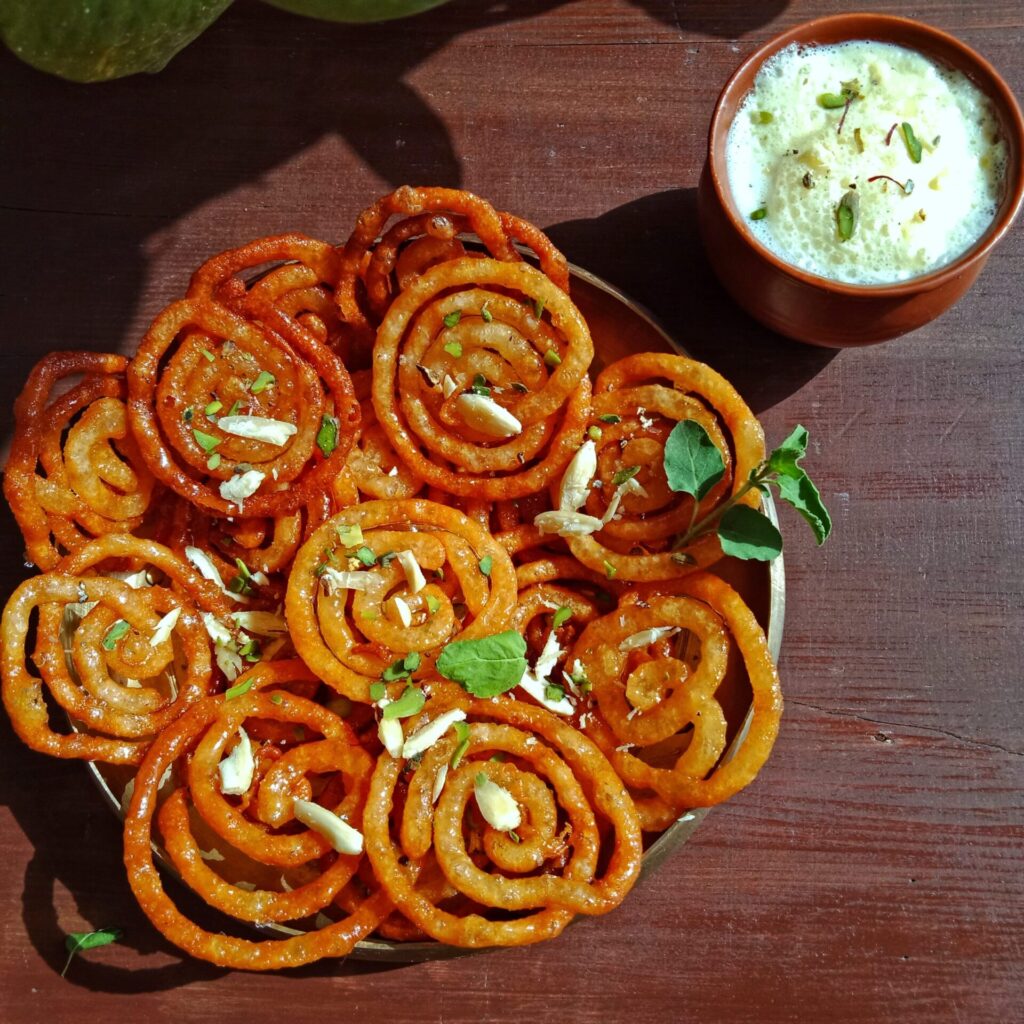Introduction:
Jalebi, a popular sweet treat in Indian cuisine, has an interesting history that reflects its cultural and culinary evolution. Its origins can be traced back to ancient Persia, where a similar sweet called “Zulbia” was made. The concept and technique of making this sweet were introduced to the Indian subcontinent through trade and cultural exchanges.
Origin of Jalebi :
Ancient Persia (Sassanian Era): The precursor to jalebi was likely the Persian sweet called “Zulbia” or “Zalabia.” This sweet was made from a similar batter, fried in circular shapes, and soaked in honey or syrup. The technique and concept were part of a rich tradition of sweets in ancient Persia.
Spread to the Indian Subcontinent: As Persian culture and cuisine spread through trade and conquest, these culinary traditions reached the Indian subcontinent. During the Mughal Empire, which began in the early 16th century, Persian culinary practices were introduced and became integrated into Indian cuisine. The Mughal rulers and their courtly cuisine played a significant role in popularizing sweets like zulbia in India.
Evolution of Jalebi:
Adoption and Adaptation: In India, the Persian zulbia evolved into what we now recognize as jalebi. The batter used for making jalebi is typically made from fermented rice flour or besan (chickpea flour) and is fried in circular shapes. It is then soaked in sugar syrup, which gives it its characteristic sweetness and sticky texture.
Regional Variations: Over time, jalebi adapted to regional tastes and preferences. It became popular across various parts of India, with some regions adding their unique twists. For example, in South India, jalebi might be enjoyed with curd or as part of traditional meals, while in North India, it’s often served as a dessert or snack.
Modern Day Jalebi:
Modern Day
- Cultural Significance: Jalebi is now a beloved sweet across India and neighboring countries. It is often associated with celebrations and festivals, such as Diwali, Eid, and weddings. Its popularity is such that it has also influenced sweet traditions in countries like Nepal, Pakistan, and Bangladesh.
- Contemporary Variations: Today, jalebi can be found in various forms and flavors, including variations made with different types of syrups or fillings. It is often enjoyed fresh, hot, and sometimes paired with other traditional dishes, like rabri (a sweet, condensed milk dessert).
Summary Of Jalebi:
Jalebi’s journey from ancient Persia to its present form in Indian cuisine illustrates how culinary practices can evolve and integrate into different cultures over time. Its unique preparation and delightful taste have made it a staple in South Asian sweets, cherished for its historical roots and enduring appeal. its best served with cool yogurt or Rabdi.

